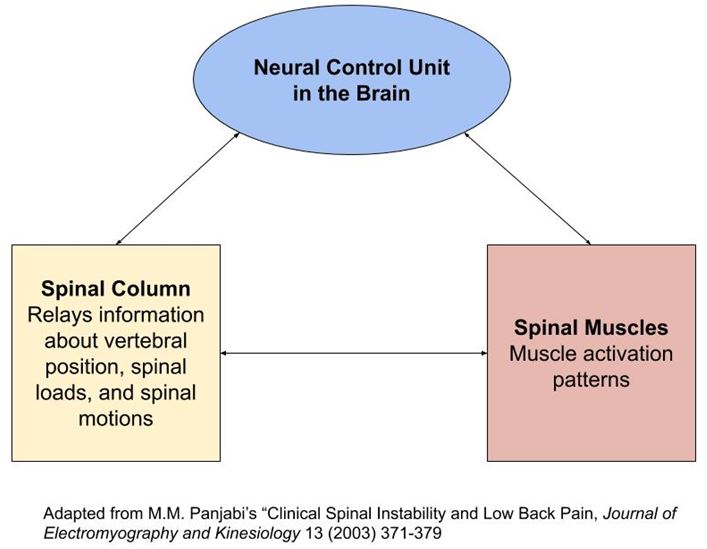
A motor vehicle collision that lasts just a second or two can adversely affect your life for years to come. Good chiropractic care can mitigate the adverse effects of such injuries. To understand why, you need to understand how soft tissue injuries--injuries to muscles and ligaments--occur and the neurological consequences of such injuries.
How Soft Tissue Injuries Occur
In a rear-end auto collision, your body obeys the physical law that a body in motion remains in motion. This is what creates cervical acceleration-deceleration (CAD)--or in more common language, whiplash--injuries.
As the video above shows, a lot of things happen in a short period of time. Note that if you are wearing a seatbelt with a shoulder harness, this restraint system keeps the torso from moving too far forward. However, the head continues to accelerate forward. This is the whip-like motion people describe when they refer to whiplash. This violent and unnatural movement creates soft tissue injuries of the back and neck.
The video above gives an excellent overview of the anatomy of the cervical spine and shows, starting at 4:40 on the video, several--but not all-- of the major ligaments that can be injured in a whiplash incident. Note that although ligaments actually hold the bones together, it is the muscles--particularly those closest to the spine--that actually provide the most stability for the neck. The following short video reviews the muscles that have attachments to the cervical spine, any of which may also become injured.
The Neurological Consequences of Soft Tissue Injuries
While the soft tissue injuries are painful in their own right, they also come with other neurological consequences not commonly understood. These tissues contain mechanical receptors which, under ideal conditions, feed a continuous stream of information, by way of the spinal cord, to your brain regarding the position of your joints and the physical loads under which they are placed. Based on this information, the brain gives instructions to muscles to fire in a synchronized way to coordinate normal movement and provide support to the spine. The illustration below shows schematically the interrelationship just described.
Because the receptors that feed information to the brain become damaged along with the soft tissues they are embedded in, the receptors provide faulty input to the brain. Faulty input leads to faulty output and thus an inability to coordinate muscular contractions required for movement and stability.
Abnormal Motion Contributes to Chronic Pain Syndromes
The abnormal motion that results from the brain’s failure to coordinate muscular contractions places already injured and inflamed tissues under more stress. This means more abnormal input into the brain, and the cycle repeats in a kind of vicious circle. As the injured tissues are also rich in pain receptors, failure to normalize alignment of the spinal joints, heal the tissue, and rehabilitate the function of the mechanical receptors in the tissues creates the potential to experience chronic pain.
This is an important fact to absorb, as there are about 3 million new whiplash injuries per year, and it is reported that of those people who are injured, 35-50% never recover fully, and 14% become disabled.[1] In 2000, the Journal Accident Analysis & Prevention published the results of the longest study ever performed on the health status of whiplash-injured patients. The study found that 17 years after injury, 55% of the patients included in the study still suffered from pain caused by the original trauma.[2]
Long Term Effect of Soft Tissue Injuries on Overall Health
However, chronic pain is just one of the long term consequences of whiplash injuries. In 2001, an article in the Journal of Clinical Epidemiology reported that whiplash injuries not only increase the incidence of complaints such as chronic neck and shoulder pain and headaches, but also significantly increase the incidence of other systemic[3] ill health effects. In other words, whiplash injuries can adversely affect the health of the entire body.[4] Other findings in the study cited above from Accident Analysis & Prevention support this assertion, as it was also found that among over 2,000 people surveyed those who suffered whiplash injuries were not only twice as likely to have chronic neck pain and headache, but they also were about twice as likely to have problems with allergies, breathing disorders, low back pain, cardiac problems, and digestive disorders.
Good chiropractic care mitigates the adverse effects of soft tissue injuries sustained in whiplash incidents in two important ways:
Chiropractic adjusting--done with due regard for the soft tissue injuries--provides stimulation to the neuromuscular control mechanisms of the central nervous system and also establishes proper alignment to ensure that injured soft tissues heal properly.
Appropriate therapies--especially therapeutic exercises that challenge the neurological systems responsible for spinal stability--rehabilitate the function of mechanical receptors within the injured tissues.
[1] It’s not clear what the original source of this data is, although it is often cited in continuing education presentations and on chiropractic websites. The author of this blog entry encountered it in a lecture given by Jeffrey Cronk, D.C., J.D., titled “How to Best Manage the Spinal Trauma Patient.”
[2] “Is A Lifetime History Of Neck Injury In A Traffic Collision Associated With Prevalent Neck Pain, Headache And Depressive Symptomatology?” Cote, et. al.; Accident Analysis & Prevention,
Volume 32, Issue 2, March 2000, Pages 151-159
[3] Systemic means having to do with the integrated function of a body’s various different systems.
[4] “The Association Between Exposure To A Rear-end Collision And Future Health Complaints;” Berglund, et. al.; Journal of Clinical Epidemiology, Volume 54, Issue 8, August 2001, Pages 851-856.



